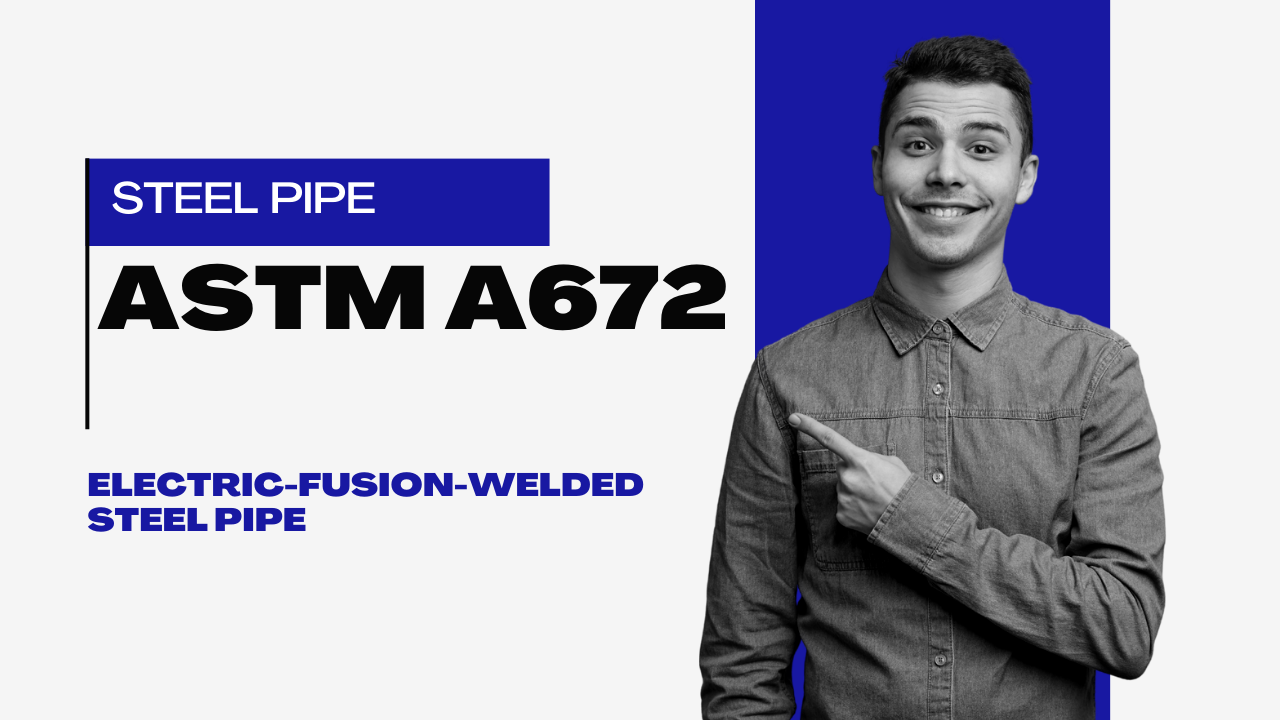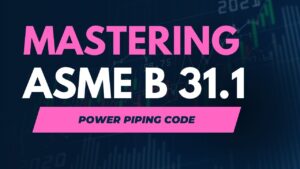Abstract
This article serves as a comprehensive exploration of ASTM A672, a standard specification meticulously crafted for electric-fusion-welded steel pipes intended for use in high-pressure environments at moderate temperatures. The article delves into a range of facets including the diverse grades, intricate chemical composition guidelines, intricate mechanical properties, the sophisticated manufacturing processes, advantages and limitations, diverse applications, adherence to codes and standards, rigorous quality control and testing protocols, significance of standards and certificates, the intricacies of ordering, and an insightful comparison with other ASTM standards. This article serves as an authoritative compendium for comprehending the nuances of ASTM A672.
1. Introduction
ASTM A672 stands tall as an indispensable cornerstone, ensuring the robustness and safety of steel pipes within high-pressure scenarios. This article unveils the multifaceted dimensions of ASTM A672, casting a spotlight on its pivotal role within the realm of high-pressure services, elaborating on its core tenets and applications.
In the realm of steel pipes, the ASTM A672 Electric-Fusion-Welded Steel Pipe stands tall as a reliable and versatile solution. With its exceptional strength, durability, and weldability, this type of pipe finds its application in a wide range of industries. In this comprehensive article, we’ll delve into the intricacies of the ASTM A672 Electric-Fusion-Welded Steel Pipe, uncovering its features, benefits, applications, and more.
Table of Contents
Do not miss the detailed course 7 Modules of Piping Codes & Standards
Enrollment link
Check out the Similar Articles on ASTM Standards
2. Various Grades
The tapestry of ASTM A672 is adorned with a plethora of grades, each meticulously designed to cater to distinct needs. These grades are characterized by numerical nomenclature, symbolizing their tailored applicability. The selection of a grade hinges on a gamut of factors including the intended service conditions, prevailing temperatures, and the magnitude of imposed pressure.
3. Chemical Composition
The elemental orchestra within ASTM A672 pipes orchestrates their mechanical symphony and overarching performance. The tabulated composition guidelines for selected grades are crucial in elucidating this delicate dance of elements:
Table 1: Chemical Composition for Selected ASTM A672 Grades
| Element | Grade A45 | Grade A50 | Grade A55 |
|---|---|---|---|
| Carbon, max | 0.17 | 0.22 | 0.28 |
| Manganese | 0.98-1.62 | 0.98-1.62 | 0.98-1.62 |
| Phosphorus, max | 0.025 | 0.035 | 0.035 |
| Sulfur, max | 0.025 | 0.035 | 0.035 |
| Silicon, min | – | – | 0.13 min |
4. Mechanical & Chemical Properties
The mechanical tapestry of ASTM A672 pipes weaves a complex narrative dictated by grades and manufacturing techniques. Yield strength, tensile strength, elongation, and the oft-overlooked aspect of impact toughness compose this narrative. The intricate interplay between chemical composition and mechanical properties underscores the meticulous material selection process.
Do not miss the detailed course 7 Modules of Piping Codes & Standards
Enrollment link
5. Manufacturing Process
The genesis of ASTM A672 pipes unfolds through the sophisticated choreography of the electric-fusion-welding process—an intricate blend of science and art. This process unfolds in a meticulous sequence:
Table 2: Comparison between ASTM A672, ASTM A106, and ASTM A333
| Aspect | ASTM A672 | ASTM A106 | ASTM A333 |
|---|---|---|---|
| Temperature Range | Moderate | Wide | Wide |
| Pressure Capacity | High | Medium-High | Medium-High |
| Material Designation | Electric-Fusion-Welded | Seamless | Seamless and Welded |
| Application Scope | Moderate temperature | High and low temperatures | Low temperatures |
(Note: The above table provides a simplified comparison and may not include all details of the standards.)
6. Pros & Cons
Pros:
- Economic Efficiency: ASTM A672 pipes herald cost-effectiveness, offering a prudent fiscal solution within high-pressure landscapes.
- Versatility Enshrined: The rich tapestry of grades unfurls versatility, adapting harmoniously to diverse industries and multifarious applications.
- Temperature Modulation: Astutely tailored for moderate temperatures, these pipes are adept at harmonizing equilibrium within the service conditions.
Cons:
- Temperature Constraints: The zenith of these pipes withers in the face of exceedingly high temperatures.
- Toughness Tensions: Select grades might exhibit a penchant for reduced toughness, necessitating astute material selection.
7. Application of ASTM Standard
The tendrils of ASTM A672 extend their embrace across an eclectic spectrum of industries:
- Power Generation: Within the realm of steam transportation, these pipes resonate within the sphere of moderate temperatures.
- Oil and Gas: The oil and gas sectors are punctuated by these pipes as conduits for fluid movement, orchestrating within petrochemical precincts.
- Chemical Processing: These pipes emerge as vessels for chemical conveyance, resonating within the intricate symphony of chemical processing plants.
8. Codes & Standards
ASTM A672 bows in reverence to codes and standards—a sanctified testament to quality and safety. Conformance to codes such as the ASME Boiler and Pressure Vessel Code stands as a linchpin in sustaining structural integrity.
9. Quality Control & Testing
The crucible of quality control births ASTM A672 pipes, an alchemy catalyzed by an ensemble of rigorous testing paradigms:
- Non-Destructive Testing (NDT): Ultrasonic and radiographic scrutiny converge to unveil the specter of internal deformities.
- Mechanical Testing: Tensile, impact, and hardness tests compose a litany of mechanical mettle assessments.
- Hydrostatic Testing: Water, an instrument of scrutiny, subjects the pipes to a baptism of pressure—a litmus test for structural efficacy.
Do not miss the detailed course 7 Modules of Piping Codes & Standards
Enrollment link
10. Standards & Certificates
The imprimatur of authenticity resonates through certifications—a definitive endorsement of conformity to industry standards. Material test reports, hydrostatic test reports, and compliance certificates stand as medallions of validation.
Table 3: Required Standards and Certificates for ASTM A672 Pipes
| Standard/Certificate | Description |
|---|---|
| Material Test Reports | Detailed documentation of chemical and mechanical properties, ensuring material conformance. |
| Hydrostatic Test Reports | Documentation of hydrostatic testing, confirming the pipes’ structural integrity under pressure. |
| Compliance Certificates | Certifications demonstrating adherence to ASTM A672 standards and industry regulations. |
11. Ordering Information
Navigating the labyrinthine domain of ASTM A672 pipes mandates a prescient and meticulous approach. Ordering these pipes necessitates a litany of information—grades, sizes, quantities—each detail an integral note in the symphony of procurement.
Table 4: Key Information for Ordering ASTM A672 Pipes
| Parameter | Description |
|---|---|
| Pipe Grade | Specify the ASTM A672 grade required. |
| Pipe Size | Provide the required size specifications. |
| Quantity | Indicate the desired quantity of pipes. |
| Additional Details | Include any specific requirements or remarks. |
12. Comparison with Other ASTM Standards
ASTM A672 stands resolute in contrast to its compatriots such as ASTM A106 and ASTM A333. Unlike its peers, A672’s valor thrives within the crucible of moderate temperature scenarios, while A106 and A333 voyage through a broader gamut of thermal terrains.
13. Conclusion
In the sprawling narrative of steel pipes, ASTM A672 stands as a pivotal chapter—a blueprint for the construction, utilization, and perpetuation of electric-fusion-welded pipes within high-pressure, moderate-temperature scenarios. The threads of understanding woven through diverse grades, intricate chemical compositions, multifaceted mechanical attributes, manufacturing orchestration, applications, and quality protocols represent the bedrock of sagacious selection and adept utilization across multifarious industries.
Do not miss the detailed course 7 Modules of Piping Codes & Standards
Enrollment link
FAQs
Q: What distinguishes ASTM A672 Electric-Fusion-Welded Steel Pipe from other steel pipes?
A: The unique electric-fusion welding method used in its production sets it apart, ensuring consistent and robust welds without the need for additional filler materials.
Q: Are these pipes suitable for high-temperature applications?
A: Absolutely. ASTM A672 pipes are designed to withstand high temperatures and pressure, making them suitable for applications in power plants and other industries with elevated heat levels.
Q: Can I use ASTM A672 pipes for underground installations?
A: Yes, you can. These pipes’ resistance to corrosion makes them a reliable choice for underground installations, where exposure to moisture and soil conditions is a concern.
Q: How can I ensure the right grade selection for my project?
A: It’s essential to consult with experts who understand the mechanical properties required for your application. Based on factors like pressure, temperature, and medium, they can guide you to the appropriate ASTM A672 grade.
Q: What maintenance practices are recommended for ASTM A672 pipes?
A: Regular inspection for signs of corrosion, abrasion, and structural integrity is crucial. Implementing a maintenance schedule that includes cleaning, coating, and repairs will help prolong the lifespan of these pipes.
Q: Where can I find more information about ASTM A672 specifications?
A: For detailed technical specifications, you can refer to reputable sources such as ASTM International’s official website or engineering handbooks that cover piping materials.
Recommended courses (Published on EPCLand):
- Basics of Piping Engineering
- Piping Layout Engineering
- Piping Material Engineering
- Piping Stress Analysis
- Complete Course on Piping Engineering
- Material Requisitions
- Piping Material Specifications
- Valve Material Specifications
Related Video
Attempt Quiz
Question 1:
What does ASTM A672 refer to?
Explanation: ASTM A672 is a standard specification for electric-fusion-welded steel pipe for high-pressure service at moderate temperatures. It covers various grades and classes of steel pipe used in different applications.
Question 2:
What is the primary purpose of ASTM A672 steel pipe?
Explanation: The primary purpose of ASTM A672 steel pipe is to provide a reliable solution for high-pressure service at moderate temperatures, making it suitable for applications where strength and durability are essential.
Question 3:
Which types of steel are typically covered by ASTM A672?
Explanation: ASTM A672 covers carbon and alloy steel pipe for high-pressure service at moderate temperatures, offering a range of materials suitable for various industrial applications.
Question 4:
What is the significance of the “E” in ASTM A672/E?
Explanation: The “E” in ASTM A672/E signifies that the steel pipe is produced using electric fusion welding, a process that involves melting and fusing materials using electrical energy.
Question 5:
What does the “CP” designation in ASTM A672/CP stand for?
Explanation: The “CP” designation in ASTM A672/CP stands for Charpy Properties, which indicates that the steel pipe has been tested for impact resistance using Charpy V-notch testing.



